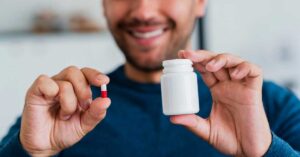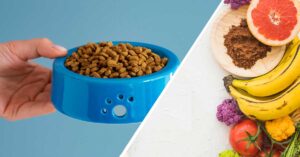 Preparing a GRAS dossier is one of the most important steps when seeking FDA recognition for a new substance in food. This dossier demonstrates that the ingredient is safe for its intended use and provides the scientific evidence needed to achieve Generally Recognized As Safe (GRAS) status.
Preparing a GRAS dossier is one of the most important steps when seeking FDA recognition for a new substance in food. This dossier demonstrates that the ingredient is safe for its intended use and provides the scientific evidence needed to achieve Generally Recognized As Safe (GRAS) status.
Each of the seven sections in a dossier serves a unique role in proving safety and compliance. If even one section is incomplete, your submission faces real risk.
That’s why businesses often turn to regulatory experts for guidance. Having the right support can make the process less overwhelming and give you confidence that every detail is handled correctly.
So, let’s break down the key sections and explain why they matter for ingredient compliance and successful FDA acceptance.
Part 1: Signed Statements and Certification
First, this opening section sets the stage. It includes the ingredient’s identity, purpose, a summary of the dossier, and an expert panel statement certifying its safety. If you omit details here, the entire GRAS submission can become weaker.
To strengthen this section, companies often include not just the required expert panel statement but also supporting context on why these experts are qualified. Furthermore, adding details about the panel’s background, experience, and scope of review makes your submission more credible to the FDA.
Part 2: Identity, Method of Manufacture, and Specifications
This section provides a detailed description of the ingredient. It outlines chemical identity, composition, impurities, and manufacturing methods. The FDA expects accurate data supported by quality control. Any inconsistency could create compliance issues.
Additionally, expanding this section with practical details can help, such as information on production consistency, storage conditions, how raw materials are sourced, specification data, three batch Certificates of Analysis (CoA), and stability data.
By showing that the manufacturing process is both controlled and traceable, you reduce the risk of regulatory concerns.
Part 3: Dietary Exposure
Then comes dietary exposure. Here, the dossier must show how much of the ingredient consumers are expected to ingest. It compares intake levels against safety data and considers vulnerable populations. Accurate calculations are key for demonstrating consumer safety.
Moreover, it helps to explain the assumptions behind your exposure estimates. For example, are you using national consumption data, industry-specific reports, or modeled estimates? Clarifying your methodology increases trust and demonstrates transparency.
Part 4: Self-Limiting Levels of Use
After that, you’ll need to show whether the substance has natural limitations. Some substances are restricted due to strong taste, odor, or texture. This section documents those properties, showing that overuse is unlikely and intake will remain within safe levels.
Here again, adding examples makes your case more relatable. For instance, you could note that certain flavor enhancers would overwhelm the taste of food if used above specific concentrations. This not only reassures regulators but also demonstrates practical consumer protection.
Part 5: Historical Use in Food Before 1958
Next, if the ingredient has a long history of safe use in food prior to 1958, this section provides the supporting evidence. Historical consumption records and expert opinions can help strengthen the GRAS case.
In addition, you can highlight the types of foods where the ingredient was used, the geographic regions where it was common, and any documented cultural or industry practices. This extra context adds depth to your historical argument and makes it more persuasive.
Part 6: Narrative – Building the Case for GRAS
Moving forward, the narrative ties all evidence together. It summarizes the data, outlines safety reasoning, addresses any concerns, and highlights expert consensus. This section is the central argument proving the ingredient’s GRAS status.
A strong narrative not only repeats the facts but also explains the “why” behind them. For example, linking toxicological study outcomes with exposure levels gives regulators confidence that your conclusions are based on sound science. By including a clear flow of logic, you make your dossier easier to review and approve.
Part 7: List of Supporting Data
Finally, the dossier closes with a list of supporting data. It compiles all scientific studies, reports, expert statements, and technical documents referenced in the dossier. A thorough and credible data list is critical for FDA acceptance.
In addition, you can explain how the supporting data was selected and why it is reliable. Highlighting peer-reviewed studies, published articles, or widely recognized industry guidelines demonstrates that your dossier is built on authoritative sources.
Key Takeaways
- A GRAS dossier demonstrates safety and compliance for new food substances.
- Each of the seven sections plays a vital role in the FDA review.
- Incomplete data can delay approvals or cause rejection.
- Strong dossiers are built on scientific evidence and expert consensus.
- Expert guidance ensures accuracy and smooth submissions.
FAQs
Is a GRAS dossier always required?
Not always. If an ingredient is already recognized as GRAS, a new dossier may not be needed. For new substances, it is essential.
Can I prepare a GRAS dossier on my own?
Yes, but it’s risky. Without regulatory expertise, important details can be missed, leading to delays or rejection.
Does prior food use guarantee FDA acceptance?
No. Historical use can help, but current scientific data is still required.
Why work with a consultant?
An experienced consultant ensures your GRAS dossier is complete, compliant, and ready for FDA review, saving time and reducing risk.
Ready to Prepare Your GRAS Dossier?
In conclusion, preparing a GRAS dossier is detailed and complex. Every section must work together to demonstrate safety and compliance. Missing information or weak evidence can stop your ingredient from reaching the market.
At Quality Smart Solutions, our experts specialize in GRAS dossier preparation and GRAS notifications. Learn more about our GRAS notification services or contact us today to ensure your submission is accurate, complete, and ready for FDA acceptance.







